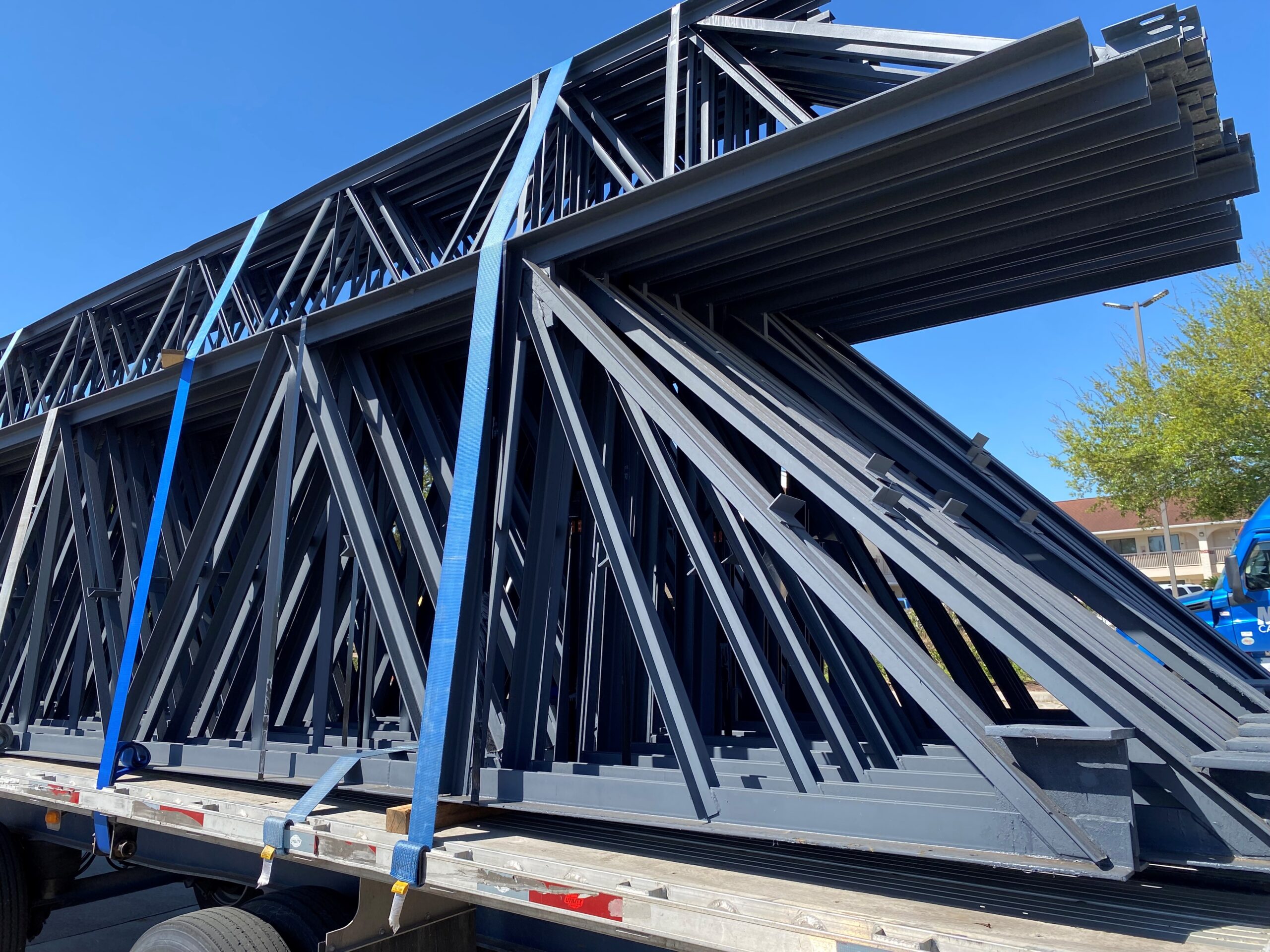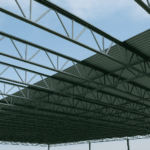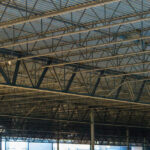Open web steel joists are a fundamental component of modern floor and roof systems, engineered to provide strength, efficiency, and adaptability in both standard and complex structural applications. Governed by the Steel Joist Institute (SJI) specifications, they offer structural advantages that extend beyond cost efficiency and are integral to high-performance building design.
1. Structural Efficiency and Load-Carrying Capacity
Steel joists derive their efficiency from the triangulated open web configuration, which transfers loads through tension and compression rather than bending. This geometry reduces the volume of steel required while maintaining load capacity.
- High strength-to-weight ratio: Compared to wide-flange beams, joists achieve equivalent spans with significantly less steel tonnage.
- Span capability: K-Series joists can span up to 60 feet, while LH- and DLH-Series joists can extend beyond 144 feet, enabling large column-free spaces.
- Load flexibility: Joists can be designed for uniform loads, concentrated loads, or combinations, providing engineers flexibility in meeting project-specific requirements.
2. Integration with Steel Deck Systems
When paired with steel deck, joists create a composite system that distributes live and dead loads effectively. Decking acts as the diaphragm, transferring lateral loads to shear walls or frames, while joists carry vertical gravity loads.
- Composite action can be achieved when deck is fastened to joists with shear studs or welds, enhancing stiffness and reducing deflections.
- Lateral stability is provided by deck diaphragms, eliminating the need for excessive bracing.
3. Fabrication Precision and Standardization
Steel joists are shop-fabricated under controlled conditions, ensuring tight tolerances and predictable performance.
- SJI standards: Uniform manufacturing specifications provide engineers with reliable design data, including load tables and chord/diagonal properties.
- Custom configurations: While standard joists are common, special joists can be designed for unique geometries, heavy loads, or integration with mezzanines and rooftop units.
- Predictable deflection performance: Engineers can design with confidence, using well-established deflection criteria (L/240, L/360, etc.) depending on roof or floor applications.
4. Construction Efficiency
Joists are delivered to site as prefabricated members, reducing field labor and erection time. Their relatively light weight simplifies crane requirements and accelerates installation.
- Bridging systems (horizontal or diagonal) provide stability during erection, minimizing buckling risks.
- Coordination benefits: The open web pattern allows mechanical, electrical, and plumbing (MEP) systems to pass through joist webs, reducing secondary framing or costly penetrations.
5. Durability and Long-Term Performance
With proper corrosion protection (galvanizing, epoxy coatings, or shop primer), steel joists exhibit long service life with minimal maintenance. Unlike timber or concrete alternatives, steel does not shrink, creep, or suffer biological degradation.
- Fire resistance: Joists can be protected with spray-applied fire-resistive material (SFRM) or intumescent coatings to meet building code fire-rating requirements.
- Vibration performance: Floor systems incorporating joists can be tuned for serviceability by selecting appropriate joist depth, spacing, and deck thickness.
6. Sustainability Advantages
Steel joists contribute to sustainable design goals through their material efficiency and recyclability.
- Reduced embodied carbon: The optimized use of steel in joists lowers tonnage compared to hot-rolled beam alternatives.
- Recyclability: Joists are produced from recycled steel and are fully recyclable at end of life, supporting LEED and other green building certifications.
7. Code Compliance and Safety
Joists are designed per ANSI/AISC 360 and SJI specifications, ensuring structural reliability and compliance with building codes. Their use simplifies the design process by providing engineers with standardized load tables and detailing practices.
- Seismic performance: When used with properly detailed diaphragms, joists contribute to lateral-force-resisting systems.
- Quality assurance: SJI certification ensures consistent material quality, weld integrity, and dimensional accuracy.
Conclusion
Steel joists are not simply cost-saving alternatives—they are precision-engineered structural members that deliver long-span capability, integration with steel deck, and reliable performance under diverse loading conditions. Their efficiency, standardization, and adaptability make them an indispensable element in modern structural systems. For engineers, they provide predictable performance, design flexibility, and long-term durability that supports both functional and architectural goals.



